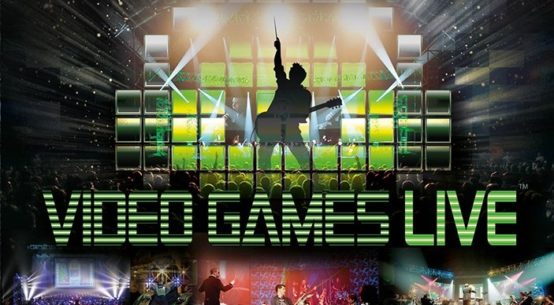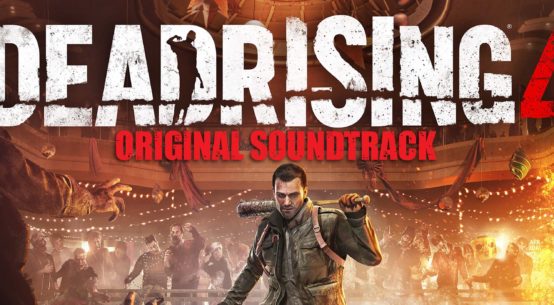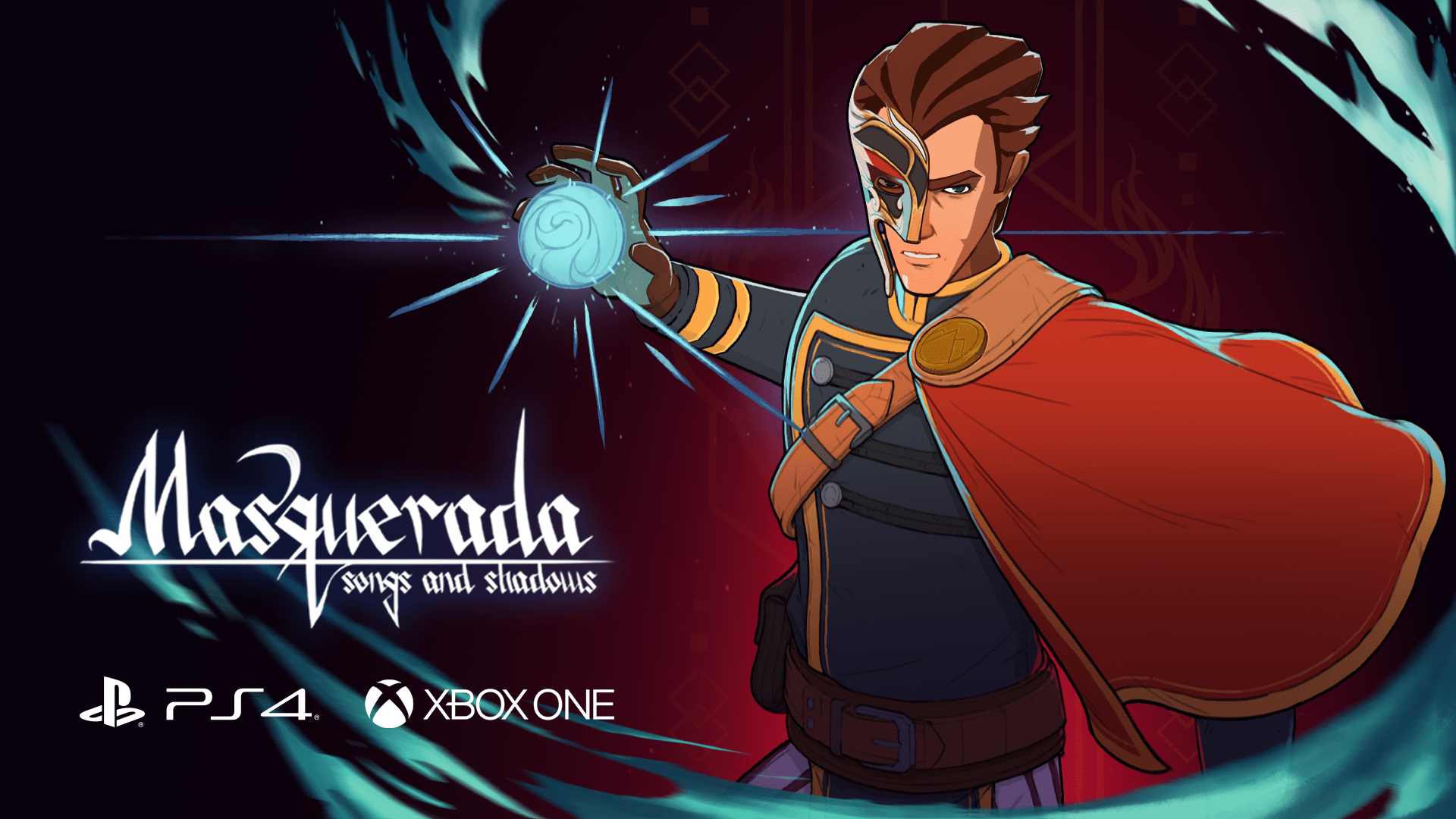
Review by Kyle Worrall
Edited by Katie Tarrant
Developer: Witching Hour Studios
Publisher: Ysbryd Games
Lead Composer: Josh Welchel
Sound Department: iNCH (Vocals) and IMBA Interactive (Sound Design).
Reviewed on: Playstation 4
Introduction
Masquerada: Songs and Shadows is a tactical Role Playing Game (RPG) that sets the player off down a dark and twisting narrative path; somewhat juxtaposing the colourful and wonderfully hand-drawn world, which is clearly Renaissance-era Venice inspired. The player participates in this engrossing narrative by traversing their way through a story of political and socio-economical divides, and covering themes of love, treachery, loyalty and duty, that they experience through a diverse and rounded cast. These characters are not only well-written, but are realised by extremely talented and recognisable voice actors in a way that makes them both relatable and believable.
Singaporean company Witching Hour Studios are a skilled team of individuals who are devoted to crafting believable worlds, and this shows in Masquerada: Songs and Shadows. They have done an incredible job of creating a world that is both deep in history and lore, allowing for players to dive into the hidden story, and also enjoyable as an experience based solely on the characters, acting and writing in and of itself. Teamed up with the promotional clever clogs of Ysbryd Games and funded for over £60,000 through a highly successful Kickstarter campaign, Masquerada: Songs and Shadows is truly a piece of art to behold. Not only is this title graphically wonderful but is also a fantastic sonic experience as a whole. With this in mind, it is time to dive into the audio!
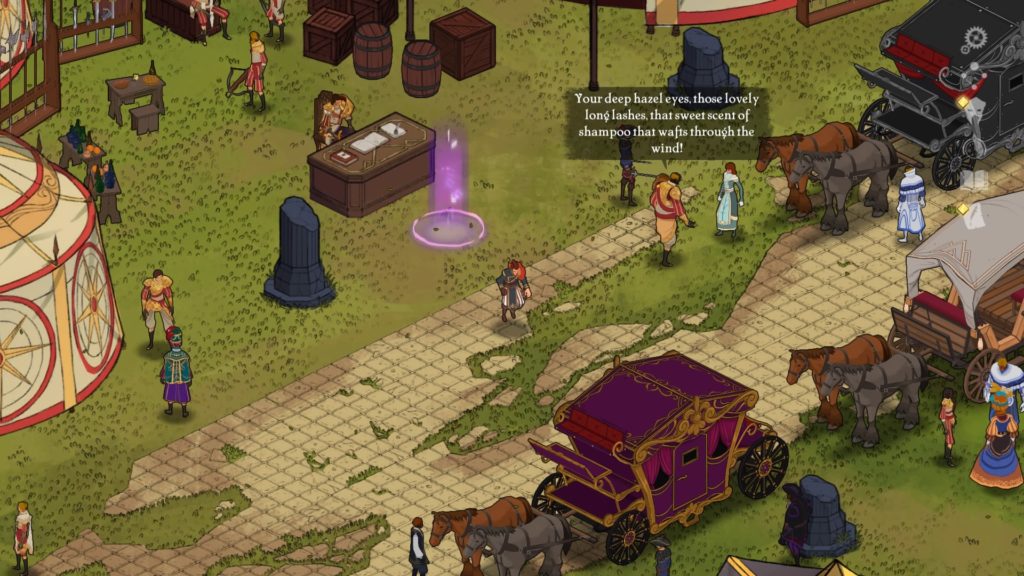
Music
In Masquerada: Songs and Shadows, the music plays a pivotal role in the generation and maintenance of the players emotional connection to the characters and the game itself, which plays a huge part in drawing you back to play it. Josh Welchel and his collaborators (Kristin Naigus, Danielle Messina, Ryan C. Connelly, John Robert Matz, Amanda Appiarius, Dan Byrne-McCullough and Patti Redistill) composed/performed the music itself and did a spectacular job with it. Singaporean singer-songwriter iNCH also joins in the musical fray to perform the vocal theme for the game (a track called ‘Broken Clay’).
Welchel and co. do a fantastic job of writing and mixing music that combines the whimsy and pomp/fanfare of a game like Final Fantasy IX during cheerful moments. Masquerada isn’t all pop and fanfare though as the music used in tenser and darker moments is equally as effective, containing foreboding and threatening elements, reminiscent of Dishonored. Masquerada’s music switches between these two styles with complete fluidity and alternates between whimsical and haunting with ease. These transitions and modulations work effectively as the overall musical compositions have a homogenous and collective feeling to them. By having such contrasting but smoothly transitioning soundscapes, Welchel and co. support the narrative perfectly without ever encroaching upon the listeners immersion.
Moreover, iNCH and perhaps some of the co-composers add a variety of evocative vocalisations over the tops of certain pieces. This is used effectively in the Menu Theme, which evokes a strong sense of foreboding. The use of vocal melodies are reminiscent of the ‘Hymn of Faith’ from Final Fantasy X and other pseudo-religious pieces of choir music in games. The only issue I found was that in a later area of the game (which I won’t name for spoilers sake), the music doesn’t loop seamlessly. It appears to stop mid-bar and then starts again. However, this could be simply be a bug that may be resolved in the future.
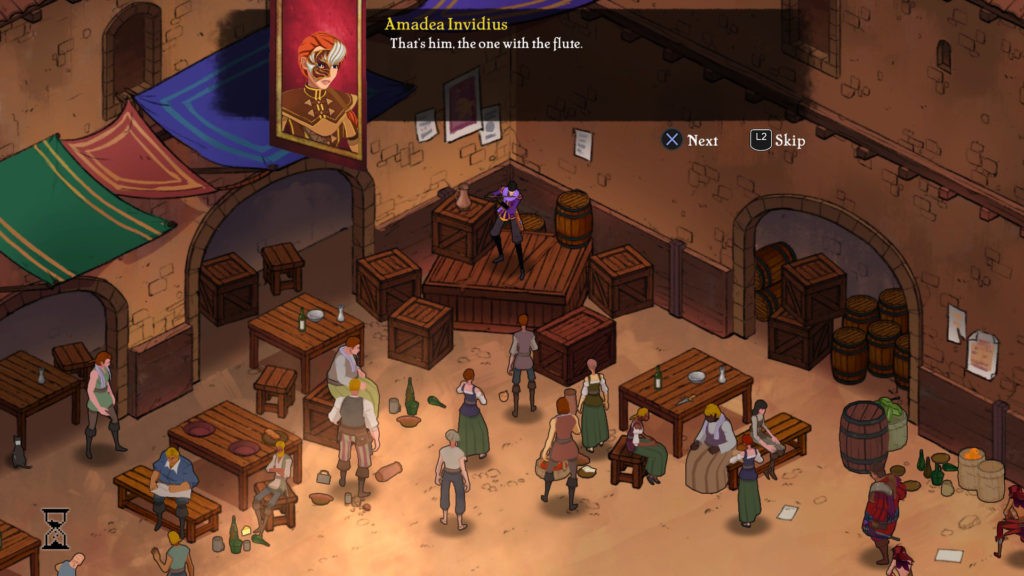
Sound Design
The sound design and implementation was outsourced to fellow Singaporean’s IMBA Interactive. The team recorded and created many of the sound effects for the game in their own studio, and implemented these into the game engine using Audiokinetic’s Wwise.
They released a post on their Kickstarter campaign discussing the methodology and ideas used for the sounds design for the game. In this, they talk about the use of vocal processing and layering to create monster sounds from their human vocal grunts. They also cover how they personified the ‘Dirges’ of different guilds using instruments that best represent their personalities or traits. An example of this is the trumpet for the more militant guild. Having not picked up on this in game, it was a highly interesting point to read.
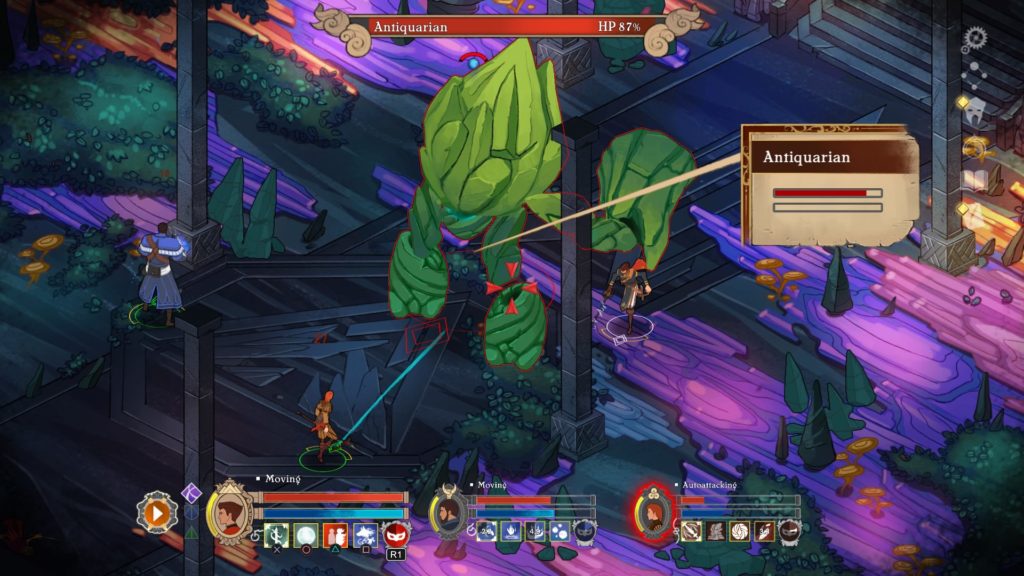
The sound design and ambiences of the locations are generally really solid and provide a great basis for the music to lay over the top of. One shots such as the sound of a cat, dog or carriage trigger occasionally sound when you’re around the character models within the world. This adds a sense of realism and bustle to the city itself.
Throughout the game, the player encounters a variety of different sized and shaped monsters, as well as performs magical and musical feats, all of which have spectacular and believable sound design. A notable example of this is the reveal of a secret pathway later in the game. It is an interesting piece of sound design that immediately gives the impression of large, concrete slabs moving against each other, which fit perfectly to the animation and aesthetic. It also conveys the size and age of the mechanism and the area the player is in without seeming unrealistic.
However, I would say that the real gems of the sound design are the monster sounds and the magic attack sounds. Whilst playing, I may encounter the same enemy multiple times, yet I was never drawn away from the gameplay by an overly repetitive sound. Additionally the larger boss monsters had vocalisations and attack sounds that grab the players attention, which is exactly what you want them to do. Magical attacks are important as they are being used throughout the game constantly and create a sense of suspended belief. This is important as it empowers the player as they dash through enemies like a water whip, or throw fireballs at a fey.
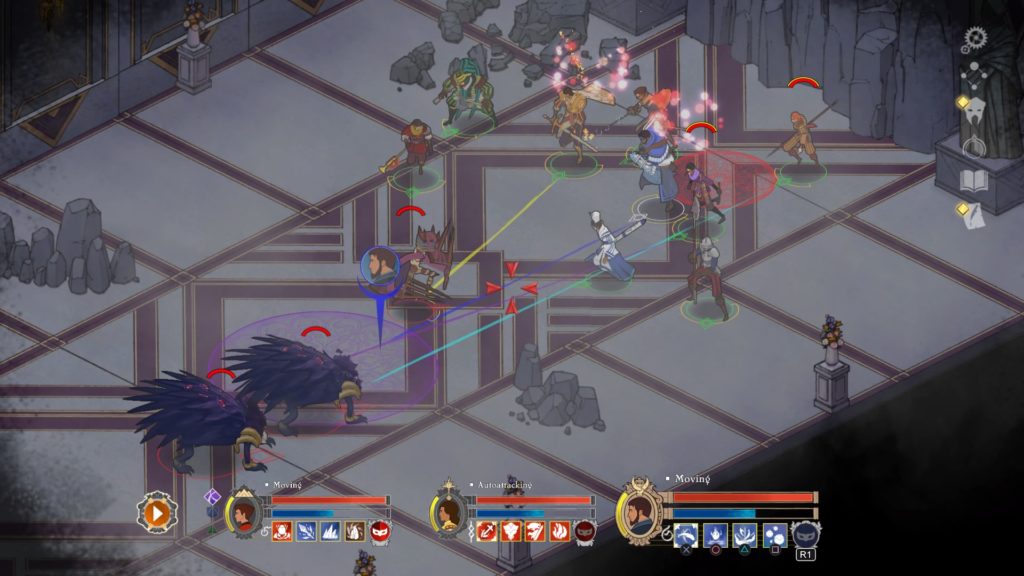
To nit pick somewhat, there were a few issues with the sound design or its implementation. The first issue was that in various sections of the game, the reverb (which is more noticeable on the voice-over as opposed to the background sound effects) is largely over-exaggerated and didn’t really need to be so. One example is an excavation site or cavern, which had this boomy, boxy reverb to it, almost like a large concrete room. Although this is a small detail, it pulled my attention away from the gameplay and broke my sense of immersion.
The second issue that I had was that a few small sounds (an example of this being a wheelchair) had a less realistic sound than would be expected. The game makes great use of carriages and scraping stones/metals and, in this instance, the wheelchair’s wheels had a synthetic sound that was slightly out of place. That being said, sounds like this were few and far between. The overall sound design for this game is top notch and I was impressed by the quality and variability of it throughout the 20+ hours I spent playing the game.
Voice Acting
Masquerada: Songs and Shadows has an absolutely star-studded cast when it comes to voice actors. All VO direction and recording was also done with Brightskull Entertainment directed by Michael Csruics. It was also done via ensemble recordings, which is quite novel for the games industry. Although I’m only going to focus on the main cast’s portrayals, the amount of talent on this project is ridiculous and includes the likes of Matthew Mercer, Felicia Day and Jennifer Hale.
Matthew Mercer (whom any fans of Geek and Sundry’s Critical Role, or the games Titanfall 2, Fallout 4, Persona 5 or Overwatch will recognise the name of) does an absolutely stellar job of bringing life to Cicero Gavaar. Although the voice did remind me of one I had heard him use in a game of Dungeons and Dragons on Critical Role, the voice was extremely fitting to the role of Cicero. The accent and inflections used offered a balance of bravado, cynicism and ranging emotions that were required of the protagonist in such a dark tale.
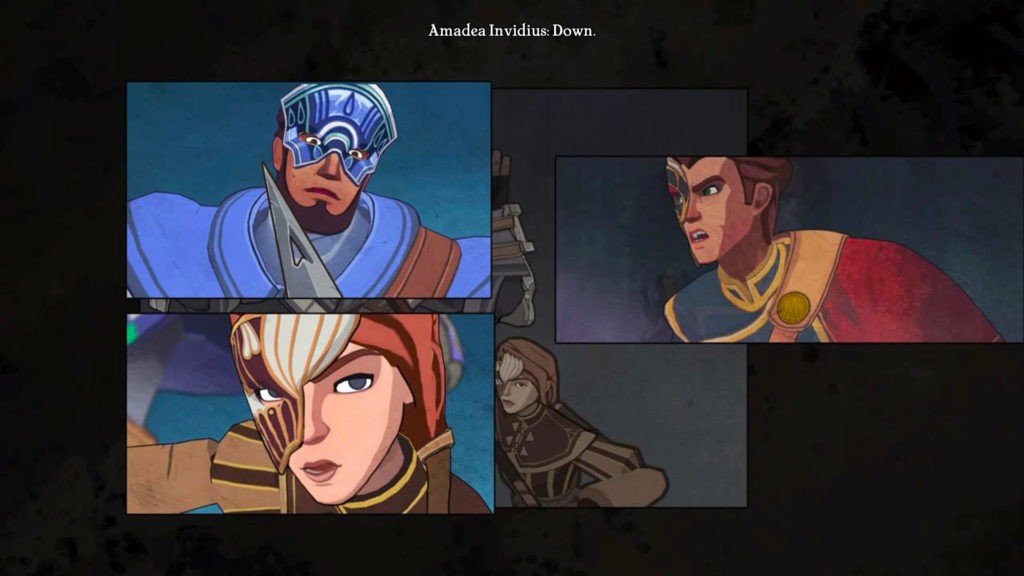
The first of your party that Cicero comes across during the story is the sullen and fierce Mariner Kalden Azrus, voiced by Rick Wasserman. Rick (who has portrayed characters in projects such as: Warcraft, Diablo III and Titanfall 2), brings a deep rumbly baritone to Kalden. Although often displaying concern, authority and anger in heated moments of the story, his character arc requires scenes of soft vulnerability that Rick nails. His portrayal of Kalden is stengthened by the powerful writing, but Rick’s expertise is evident in this role.
Breathing life into a troubled and reclusive Earthbrand by the name of Amadea Invidius comes the wondrous Catherine Taber (notable for playing Penelo in Final Fantasy XII, Padme in Disney Infinity 3.0 and Countess Anise in Guild Wars 2). A role requiring levels of depth, ranging from an excited interest in the archaeological and archaic to the decidedly cold front she offers to other characters, Catherine delivers on all fronts in a believable way. She even adds her own brand of humour in this story.
A somewhat newer voice actor, having cut her teeth on the long awaited Halo 5: Guardians, is Michelle Lukes. Playing the formidable and sullen Tiziana De Felici (who spies for her militant guild), Michelle does an excellent job at not only demonstrating levels of outrage but also concern and vulnerability as the script requires.
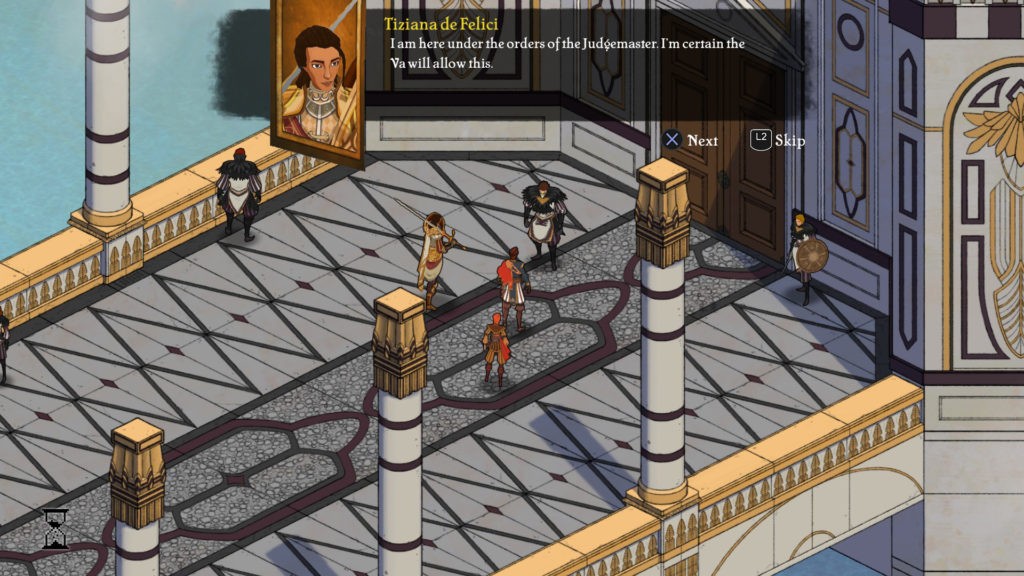
To your hardened J-RPG fan,you may also have noticed Robbie Daymond in the form of the delinquent Vasco Tessitore. Hailing from many recent and popular titles such as Persona 5, Final Fantasy XV and Friday the 13th: The Game, Robbie is delightful in this insulting yet charmingly charismatic role.
Last but not least, I feel it appropriate to give Jacob Burgess (of Guns of Icarus Online, Baldurs Gate: Siege of Dragonspear & more) a shout out. Jacob performs not only the voice of Oli (the games cute monster mascot) but also three minor roles remarkably well (even if the parts are only short). Now Oli has an interesting role in the plots development and speaks using a fictional archaic language, which is spoken in a believable almost broken way, as if it’s learning the language as it speaks. I found this to be incredible well portrayed, as it conveyed the difficulty in communicating in game very clearly. Jacob’s parts are solid and performed to such a decent level, I didn’t notice that the voice actor was the same until I was informed so. All in all, his performance is enjoyable and professional and we should all keep an eye out for him in more releases!
Although some of the NPC’s and minor characters that appear in the story are less well acted and are questionable at times, the main cast are absolutely top quality. The only issues I found with this game were that when the main cast are experiencing outrage and are shouting, the volume of their dialogue is a little too level. Although the emotion is there in the performance, there seems to be a set dynamic for the speech regardless of whether a person is speaking, shouting or muttering. Naturally when shouting the voice would become louder, and this is not necessarily the case within the game.
The issue I noticed with reverb levels also rears its head with the dialogue. Although the reverb is often fitting to a large area, it doesn’t seem to fit the represented space within the game and breaks the realism somewhat.
Overall
Overall, Masquerada: Songs and Shadows is an absolute pleasure to play. The game play is exciting and enjoyable, and I would count this game as an experience. Albeit, a different kind of experience to popular narratively driven titles such as: Dear Esther, Everybody’s Gone To Rapture and The Last Guardian. Masquerada differs from these titles in both style and substance, yet manages to still be an evocative and thought provoking piece.
In regards to the overall audio, I think that the acting is top notch, and the music and sound design both suit the aesthetic of the game and the narrative perfectly. Although I have nitpicked a few small points regarding the audio for this project, it is still an extremely high quality product and, if you don’t mind a little bit of reading, it’s well worth the price of £20, if not more.
LINKS
Official
We hope you enjoyed Kyle’s review, check out others in our Reviews section. Don’t forget to sign up to our Monthly Newsletter to make sure you don’t miss out on our reviews and interviews.
We’re also running a Patreon campaign to make sure we can keep bringing you regular, high quality content if you’re feeling generous! Thanks for even sharing!
The Sound Architect



